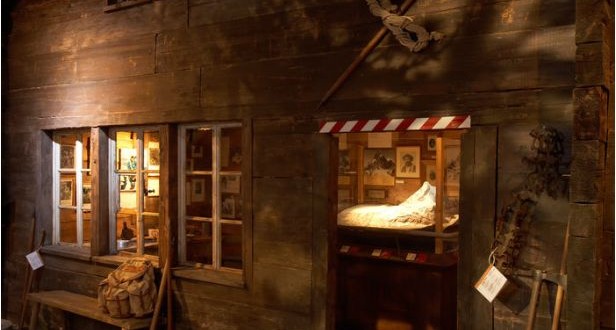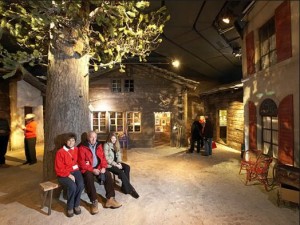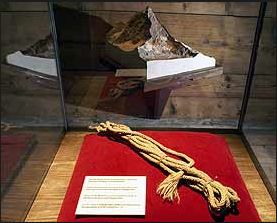The Zermatt Zermatlantis Museum has become an important pillar of Zermatt’s alpine history and culture, with as many as 1000 visitors flocking to the underground world of the museum on some days. The concept of setting up a village with original, old buildings from Zermatt as a showplace for the historical subjects has been extremely successful. For its guests, the museum has developed into an integral feature of the overall experience of Zermatt. Even the locals often come and look around.
On average, around 40,000 persons visit the museum each year. It can happen that up to 1,000 persons descend the stairs into the underground past of Zermatt on a single day. The successful concept originated from the Steiner museum concept company in Sarnen, who count the Glasi Hergiswil or glass works museum, the Harbour Museum in Hamburg and the Swiss National Museum or Landesmuseum, among their clients. Zermatlantis is the fusion of the words Zermatt and Atlantis, and is a metaphor for the historically designed museum archipelago. Stories are told of the Horu, and of the little village with its inhabitants, who have now become globally respected tourism protagonists as a result of “first ascent alpinism”.
Now and again, you can notice that the visitors of the Museum’s village square behave as they would have behaved on a real village square. People talk to each other, sit on the benches near the tree or even take a nap. You reach the walk-in buildings from the cobbled village square where there is the mountain guides house, the local pastor’s home, the tiny tea house and the stables with farm animals, including mules, black-necked goats and black-nose sheep. There are also wild animals, such as marmot, chamois and an ibex.
The visitors are mostly drawn to mountain guides house and to the house in which the first ascent of the Matterhorn by Edward Whymper in the year 1865 is shown. The drama of the three survivors, Whymper and father and son Taugwalder, the mountain guides, and the four men who fell, Michel Croz, a mountain guide from Chamonix, and the guests Francis Douglas, Robert Hadow and Charles Hudson, really gets under your skin. In addition to the broken rope, which is draped over a red velvet cushion, you can also see equipment and clothing remnants from the victims, as well as the portraits of the stern-looking participants. In 2007, using a replica of the original rope, it was found that, contrary to the rumors, the rope was not cut for self-survival. The investigation commissioned by the museum proved that the rope could only hold 300 kilograms, and was therefore too thin to save the lives of the four men that fell. But the following are also now being shown, such as the ascent routes on the Hore. The records from the year 2011 showing the latest conquerors of the Matterhorn. The stories of the ascents of the North Wall of the Matterhorn and the female mountaineer Yvette Vaucher. And, of course, the legendary Zermatt mountain guide Ulrich Inderbinden can be seen more than once.
Since spring of 2012, there is a special exhibition in the Museum about the alpinism pioneer Walter Bonatti. In 1965, he was the first person to single-handedly climb the North Face of the Matterhorn, which he did in six days. His record was broken in 2006 by the extreme mountaineer Ueli Steck who completed in 25 hours. On September 21st of 2011, however, Patrick Aufdenblatten and Michael Lerjen, both from Zermatt, managed to conquer the same route in only 7 hours and 14 minutes. The Museum thereby not only shows how alpinism was experienced in the past, but also offers the opportunity to find out how alpinism in Zermatt is still developing today, using the latest facts and pictures.



